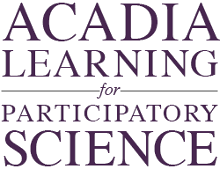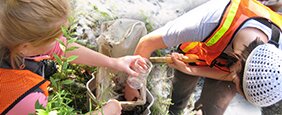Search Curriculum Activities
Narrow your search for curriculum activities using the categories below.
175 results for All Curriculum Activities
| Title | Description | Type |
|---|---|---|
| A helpful document with language for describing variability in a dataset. | Teacher instructionals & primers, Data literacy instructionals | |
| A collection of suggested practices and how to’s for snowpack teachers, by snowpack teachers | Teacher instructionals & primers | |
| Teacher instructionals & primers | ||
| Data Warm-Ups | The goal of this activity is to demonstrate that there is natural variability when we make measurements and observations. | Curriculum activity |
| A watershed for all seasons | This is a reading and discussion activity--students discuss the effects of watershed and season on the nitrogen cycle. | Curriculum activity |
| Data Interpretation | Guide students to interpret their data as the data relate to their hypothesis. | Curriculum activity |
| Data Organization | Getting all data—field and lab—into one spreadsheet. | Curriculum activity |
| Data Presentation | Students graph their data. | Curriculum activity |
| An Introduction to the Nitrogen Cycle | This activity introduces the nitrogen cycle in the context in which we will be conducting our research: forested landscapes influenced by four distinct seasons. | Curriculum activity |
| Why do we Care about Mercury? | This activity involves doing library or Internet research and then doing calculations based on that research, to answer some mercury questions. | Curriculum activity |
| Expanding the View of Nitrogen Cycling | Students use text and visual resources to gain a basic understanding of the whole nitrogen cycle, and then use that understanding to add to the diagram of the nitrogen cycle created in Activity 1. | Curriculum activity |
| Habitat Connectivity | Students watch two brief videos and discuss the idea of habitat connectivity. | Curriculum activity |
| Nitrogen: too much of a good thing | Students interpret graphical data that have come from a long-term study of nitrogen additions to a forested ecosystem. | Curriculum activity |
| Concentration as a unit of measurement | Activity to understand environmentally realistic concentrations. | Curriculum activity |
| The Road to Toxicity | An activity to help students get some idea about where mercury comes from and how it develops into a toxic form that can be ingested by living things. | Curriculum activity |
| Mapping U.S. Mercury Emissions | This activity tracks that mercury back to one of its sources (electric utilities), using data collected by the US Environmental Protection Agency. | Curriculum activity |
| Authoring a research poster | After outlining the poster, students now create their research poster. | Curriculum activity |
| Outlining the project | In this activity students get together all of the information they need to begin authoring a poster – notes, reports from other activities, data, graphs, etc. Then students think through the ‘storyline’ of their project and outline the elements that will | Curriculum activity |
| Presenting your research | Students present their research in poster session format, are available to talk people through the poster and their research, and to answer questions. | Curriculum activity |
| Developing research questions and hypotheses | This activity is primarily a brainstorming activity that looks at the assumptions, mechanisms, and unanswered questions that are buried in the students’ picture of the system they are studying. | Curriculum activity |
| Hypothesis peer review | A brief exercise in peer review. | Curriculum activity |
| Creating a video of your proposed hypothesis | Students develop, practice and record a brief, scripted presentation of their scientific claim (30 seconds to 2 minutes is sufficient). | Curriculum activity |
| Reviewing proposed hypothesis videos | Students review and provide constructive feedback on the hypothesis videos of student researchers from other schools. | Curriculum activity |
| Toxicology and Living Systems | How does mercury get into organisms, how does it move through their systems, and how does it affect them? This activity begins to introduce students to answers to these questions. | Curriculum activity |
| Mercury in our study site, and how does it move? | This is the essential activity within Unit 2 and has students visit (or virtually visit) their field site in order to better understand its ecosystem and the food web that exists there. | Curriculum activity |

 Acadia Learning brings scientists, teachers, and students together in partnerships that result in useful research and effective science education.
Acadia Learning brings scientists, teachers, and students together in partnerships that result in useful research and effective science education.